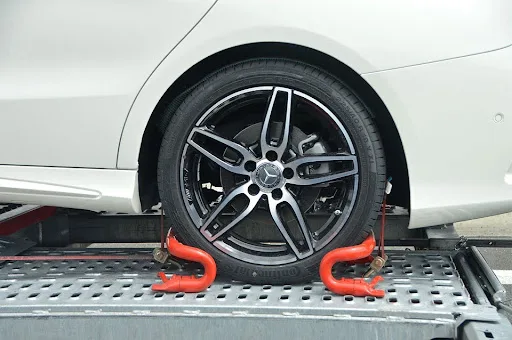5 minute read
Towing a vehicle is a task that many drivers may face at some point, whether due to a breakdown, an accident, or moving a non-operational car. However, towing is not as simple as just hooking up a vehicle and driving off. It requires proper knowledge, equipment, and attention to safety. This guide will walk you through the essentials of towing a vehicle, ensuring you understand the process and can do it safely.

Understanding the Basics of Towing
Before you even think about towing a vehicle, it’s important to understand the basics. Towing involves attaching a non-operational vehicle to a tow truck or another vehicle using a tow bar, tow dolly, or trailer. The process must be done carefully to avoid damaging either vehicle and to ensure the safety of everyone on the road. The weight of the towed vehicle, the type of towing equipment, and the capacity of the towing vehicle are all crucial factors that must be considered. Overloading or using improper equipment can lead to dangerous situations, such as the towed vehicle swaying or the towing vehicle struggling to control the load.
Essential Equipment for Towing
When it comes to towing, having the right equipment is crucial for a safe and effective operation. A range of tow hitches is available, each designed to handle different weights and types of vehicles. The most common types include receiver hitches, gooseneck hitches, and fifth-wheel hitches, each suited to specific towing needs. In addition to a reliable tow hitch, safety chains are a must; they provide an extra layer of security in case the hitch fails. Equally important are the lights for the towed vehicle, which can either be connected through a wiring harness or mounted separately. Regular maintenance of towing equipment is essential to ensure its functionality and safety. Checking the condition of tires, brakes, and the integrity of the hitch itself can prevent accidents and ensure a smooth towing experience.
Choosing the Right Towing Method
There are several methods for towing a vehicle and choosing the right one depends on the situation and the type of vehicle being towed. Flat towing, where all four wheels of the towed vehicle are on the ground, is common for smaller vehicles. However, this method requires a specific setup to avoid damaging the towed car’s transmission. Another method is using a tow dolly, which lifts the front wheels off the ground, making it a good option for front-wheel-drive vehicles. Finally, there’s trailer towing, where the entire vehicle is loaded onto a flatbed trailer. This is the safest method but also the most equipment-intensive, often requiring a larger towing vehicle.
Legal Considerations When Towing
Towing a vehicle involves more than just mechanical know-how; you must also be aware of legal requirements. Laws regarding towing can vary by state or country, so it’s important to familiarize yourself with local regulations. Some areas require a special towing license or permit, especially for larger vehicles or commercial towing. There are also restrictions on where you can tow, such as prohibitions on towing on certain highways or during specific hours. Furthermore, if the towed vehicle is not registered or insured, you may need temporary permits to tow it legally. Ignoring these legal aspects can result in fines or even impoundment of the towed vehicle.
Safety Tips for Towing
Safety should always be your top priority when towing a vehicle. Start by performing a thorough inspection of both vehicles and all towing equipment. Check the tires, brakes, and lights on both the towing and towed vehicles. When driving, keep your speed low, especially when turning or driving on uneven terrain. Sudden stops or sharp turns can cause the towed vehicle to sway or even jackknife, leading to loss of control. It’s also essential to maintain a safe following distance, as stopping will take longer due to the added weight. If you’re new to towing, consider practicing in a safe, open area before hitting the road.
Dealing with Common Towing Challenges
Even with all the right preparations, towing can present unexpected challenges. One common issue is trailer sway, where the towed vehicle starts to fishtail behind the towing vehicle. This can usually be corrected by slowing down gradually and ensuring the weight distribution on the trailer is balanced. Another challenge is handling steep inclines or declines, which can strain the towing vehicle’s engine and brakes. Use a lower gear when going uphill, and engage engine braking when descending to avoid overheating the brakes. In case of emergency, such as a blown tire on the towed vehicle, it’s crucial to remain calm, gradually slow down, and pull over safely.
Towing a vehicle is a task that requires careful planning, the right equipment, and a strong emphasis on safety. By understanding the different towing methods, legal requirements, and potential challenges, you can ensure a smooth and safe towing experience. Whether you’re towing a vehicle for the first time or just need a refresher, following these essential guidelines will help you navigate the process with confidence.




